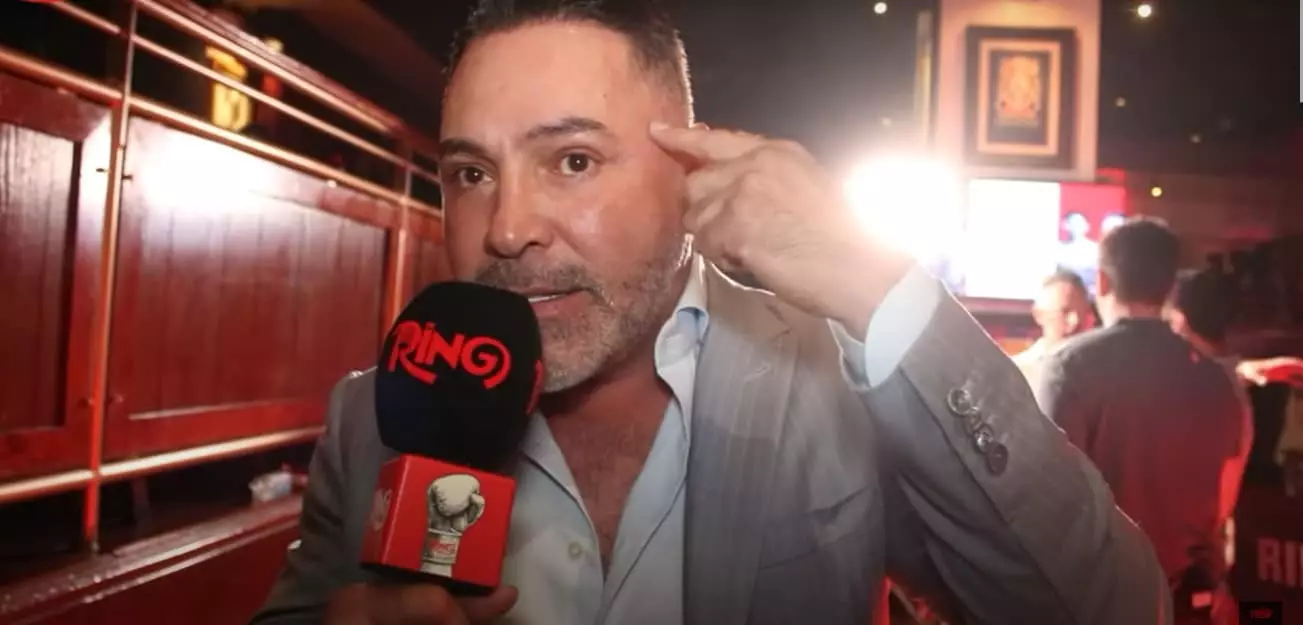In the fiercely competitive world of boxing, perceptions can often be scarier than the punches exchanged inside the ring. Promoter Oscar De La Hoya’s recent comments reveal a deeper strategic mindset—one that goes beyond mere promotion to testing mental fortitude. His deliberate attempt to undermine Edgar Berlanga’s confidence by insulting his mental stability and exposing false jewelry isn’t just trash talk; it highlights a troubling aspect of modern boxing culture. The act of flaunting fake jewelry at press conferences, ostensibly to impress fans, can sometimes mask deeper insecurities or unfulfilled ambitions. De La Hoya’s assertion that Berlanga’s “gold” is fake underscores a broader commentary on authenticity—whether in material possessions or in the confidence fighters project.
This tactic, whether deemed ethical or not, might reveal more about De La Hoya’s approach to winning than about Berlanga himself. Is it a sign of strategic psychological warfare or a shallow attempt to distract and destabilize a rival? Regardless, it exposes a fundamental truth: in boxing, the narrative crafted outside the ring can significantly influence a fighter’s performance inside it. Confidence is cultivated through genuine preparation, but it can also be artificially manufactured through illusion and manipulation.
Identity and Authenticity: The Fight Beyond the Ring
A core element of De La Hoya’s personal attack lies in questioning Berlanga’s identity. By suggesting that Berlanga is not truly Puerto Rican despite claims to the contrary and highlighting the fact that he has never lived in Puerto Rico, De La Hoya touches on a sensitive subject of cultural authenticity. In boxing, image and identity often serve as a form of branding; fighters and promoters alike seek to craft narratives that resonate with fans and increase marketability.
However, when these personas are based on false premises—like wearing fake jewelry or passing off a manufactured identity—the audience and competitors alike can lose respect. Authenticity matters far beyond surface-level appearances. It shapes the legacy of a fighter and the perception of their character. Berlanga’s struggle to provide his passport or verify his claims only reinforces the importance of transparent identity in a sport where reputation can make or break careers. Once a fighter’s sincerity is questioned, their inner confidence can quickly erode, making victories less attainable and setbacks more damaging.
The Psychology of the Fight: What’s at Stake Beyond Power
De La Hoya’s comments suggest that the true battleground isn’t just physical strength but mental resilience. By attempting to rattle Berlanga, he recognizes that confidence and composure are key factors in determining the outcome of high-stakes matches. Berlanga’s recent performances, where he struggled against less formidable opponents like Marcelo Coceres and Roamer Alexis Angulo, indicate that his mental stability could be in question. These are red flags for any fighter competing at an elite level because strength alone cannot compensate for psychological vulnerabilities.
The upcoming fight against Hamzah Sheeraz will be a test of Berlanga’s resilience. Sheeraz, unbeaten with 17 knockouts, presents a genuine challenge, and a fighter’s mental state could tip the scales. If Berlanga is unable to maintain focus and composure, he risks falling into a pattern of underperformance typical of fighters who rely heavily on power but lack the mental toughness to adapt under pressure.
De La Hoya’s strategy raises a debate about the integrity of psychological mind games in boxing. While some argue that such tactics are part of the game, others insist they undermine the sport’s integrity by shifting focus from skill and preparation to manipulation and deception. Ultimately, the mental game in boxing is as critical as the physical, and fighters who can maintain authenticity—both in persona and performance—stand a better chance of long-term success.
The Real Battle: Substance Versus Show
The larger lesson emerging from this saga is the importance of substance over spectacle. In boxing, superficial attributes—bling, bravado, manufactured narratives—may win temporary attention or intimidate opponents, but they rarely lead to lasting legacy. Berlanga’s attempts to impress with flashy jewelry and a fabricated identity only serve as distractions from his true challenge: developing genuine skills and mental resilience.
De La Hoya’s harsh criticisms serve as a reminder that real champions are built on authenticity, discipline, and mental strength—not material illusions. The upcoming fight against Sheeraz will ultimately reveal whether Berlanga can rise above superficial distractions and perform with authentic confidence. For those watching, it’s a lesson that appearances can deceive, but true strength is rooted in integrity and self-awareness, qualities that no fake diamond can imitate.
—
This newfound focus on internal character versus external appearances underscores that in combat sports, as in life, one’s true value is revealed not by what is shown on the surface but by the resilience of the spirit within.

